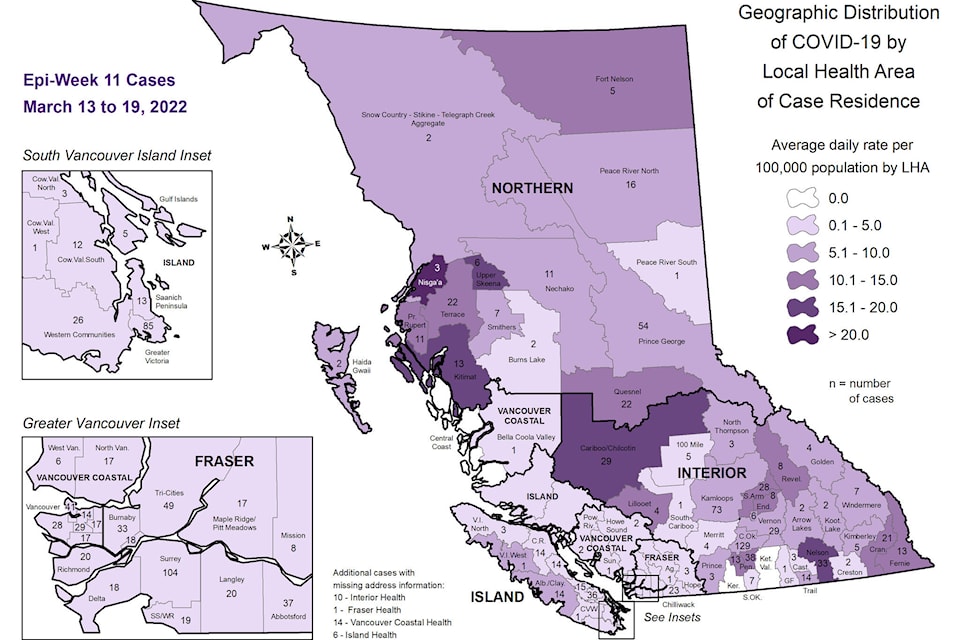The number of new COVID-19 cases in the Terrace local health area (LHA) remained roughly level for the third straight week with 22 new cases from March 13 to March 19, compared to 20 the week before.
Haida Gwaii and Snow Country - Stikine - Telegraph Creek LHAs registered the lowest number in the northwest with two new cases each, according to British Columbia Centre for Disease Control (BCCDC) data.
There were 13 new cases in Kitimat, 11 in Prince Rupert, seven in Smithers and six in the Upper Skeena LHA. The Nisga’a LHA recorded three new cases.
Access to testing remains limited across the province, so case counts are not representative of the full scope of COVID-19 infections in B.C. Rapid antigen tests are now available at pharmacies for people 18 and over, however positive rapid test results must be self-reported to the BCCDC to be counted in official statistics.
Third doses of COVID-19 vaccines are being distributed in clinics and pharmacies around the northwest, with Haida Gwaii leading the region with 58 per cent of people aged 18 and up with three doses. As of March 22, Terrace’s rate is 51 per cent and all northwest LHAs have a third dose rate ranging from 45 per cent to 58 per cent.
After weeks of declining cases across the province, B.C.’s COVID-19 hospitalizations have risen slightly.
On Wednesday (March 23), the province reported 258 people in hospital with the virus, 49 of whom are in intensive care. That’s an increase of four people in the last 24 hours and one more patient in ICU. This is the first time since Feb. 7 that B.C. has reported an increase in hospitalizations.
Not all people in hospital with COVID-19 are there because of complications with the virus, however, hospitalizations are a lagging indicator of COVID-19 infections more broadly.
—With files from Cole Schisler
